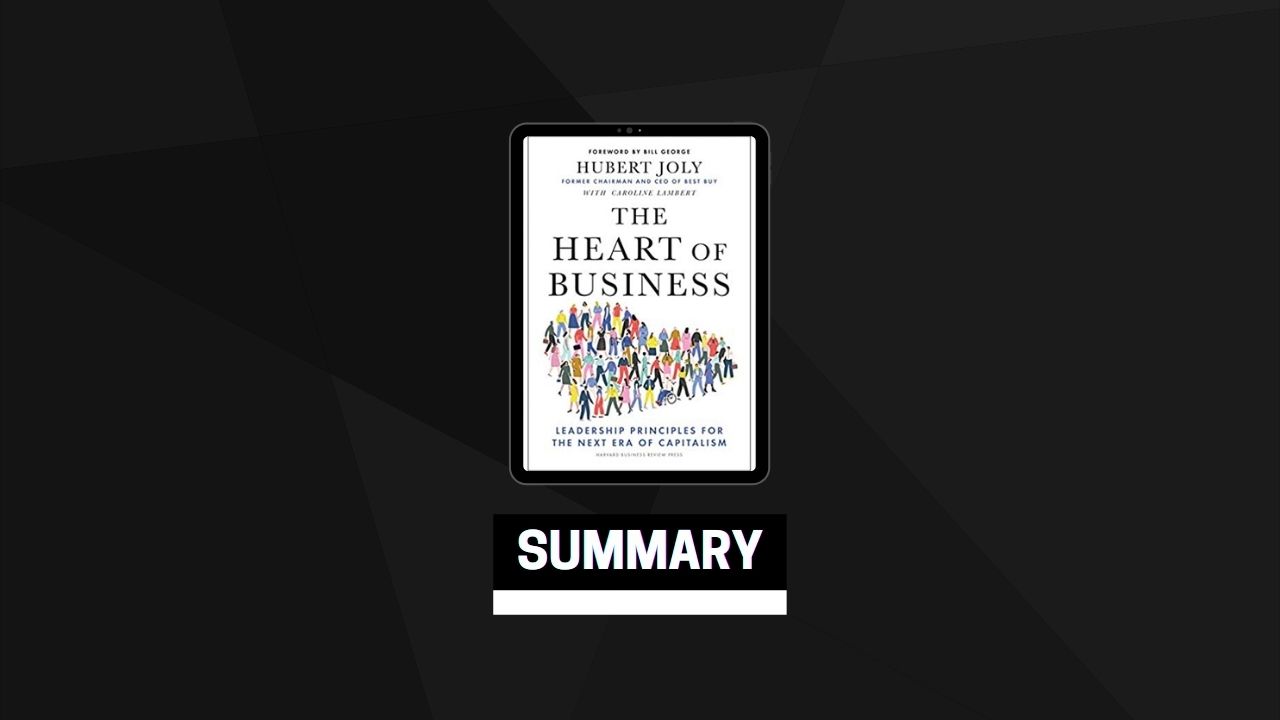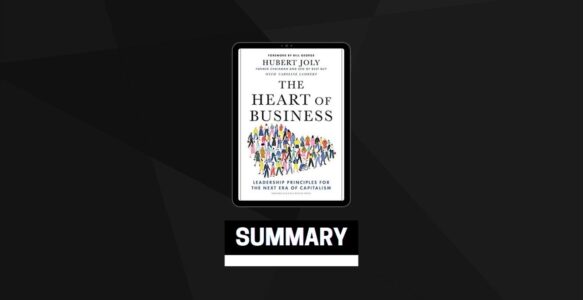Kindle | Hardcover | Audiobook
A Singular Focus on Profit Is Dangerous
Profit—like the temperature of a patient—is a symptom of other underlying conditions, not the condition itself. And focusing on the symptom alone can be dangerous. Think of a doctor who is rewarded merely for keeping patients’ temperature within a healthy range. The thermometer might end up in the fridge whenever a patient runs a fever.
It is an easy game to rig, and not just through accounting, you can maximize profit by underinvesting in people and other assets that directly benefit customers. It works, but for a short time. Expenses go down, and the numbers look good for a time while the long-term health of the business suffers. This is precisely what happened at Best Buy between 2009 and 2012, when the company slowed down spending on its stores and invested too little in e-commerce. At the same time, it increased prices. For a while, that helped sustain its bottom line—until customers grew tired of battling with the company’s website, and of the dusty stores and poor customer service.
A steady stream of corporate scandals through the past two decades, such as Enron’s house of cards, Volkswagen’s “dieselgate,” and Wells Fargo’s scandal, are direct consequences of an excessive focus on numbers. The 2008 recession was the result of bad behavior on a large scale, demonstrating the danger of this approach to running a business.
The Business of Building Cathedrals
“The purpose of a corporation is not to make money!” said Jean-Marie Descarpentries. Jean-Marie explained that companies have in fact three imperatives: people, business, and finance.
These three imperatives are linked. Excellence on the first imperative—the development and fulfillment of employees—leads to excellence on the second—loyal customers buying your company’s products and services again and again. This then leads to excellence on the third imperative, which is making money. The causal link goes like this:
People ➞ Business ➞ Finance.
At the very top is a noble purpose. Purpose is the reason the company exists. A noble purpose is the positive impact it is seeking to make on people’s lives and, by extension, its contribution to the common good. That common good is the core focus of the company and is integrated in every aspect of what the company does. Business does well by doing good.
Employees—at the center—rally around the noble purpose, and customers profoundly relate to it. It becomes a guiding North Star against which strategy is formulated and every decision made and measured.
At its core, the resurgence of Best Buy is based on embracing and implementing these principles. It has propelled the company to heights that, back in 2012, few would have imagined possible.
Putting a Noble Purpose to Work
Best Buy’s noble purpose of enriching lives through technology did not just stay on some presentation slide. It fundamentally changed our strategy and how Best Buy did business. It unleashed significant innovation and growth.
If Best Buy had not linked its purpose to its strategy, it would not have recognized opportunities now bearing fruit, like offering “total tech support” and deploying in-home advisors. The point is to enrich lives through technology, so Best Buy’s Geek Squad helps you with your tech regardless of where you bought it. And in-home advisors make house calls to provide tech solutions that are best designed on-site, not in the store. Best Buy’s advisors become like your personal “chief technology officer” over time.
Imagine you are responsible for the strategy of a health and life insurance company. If your purpose is defined in terms of profits, then your best strategy is about making sure your customers use your services as little as possible. Your customer interaction will focus on collecting premiums and managing claims. If, however, you define your noble purpose as helping people live healthier lives, then the strategy changes, radically.
Moving Past Carrots and Sticks
Neither carrots nor sticks are very good at changing human behavior over long periods of time—let alone permanently. Rewards and punishments are what psychologists label as “extrinsic motivators,” which do not fundamentally drive or change behavior, whether it is trying to lose weight, stop smoking, or change how you work.
Drive and engagement at work come from a flame that burns from within; carrots and sticks do not create it. In fact, they actively snuff it out. Dangle pay-for-performance in front of people, and they also become tempted to hide mistakes or shortcomings, rather than seek help and see challenges as chances to learn and grow. Pushed even further, incentives may result in plain wrongdoing.
If incentives do not motivate people to go the extra mile, then what will?
It starts with one fundamental change of perspective: to view people as a source rather than a resource. Employees must be treated as individuals working together in pursuit of a common purpose, rather than as an “asset.” Each employee is an individual with his or her own motivations and sense of purpose, not human capital driven exclusively by money. It is time to move past the quest to drive the behavior of a collective workforce, and instead seek to inspire people by connecting with what matters to each one of them. Unleashing human magic means creating an environment in which individuals flourish. Because when people are doing what matters to them and what they believe in, they will walk through walls, pouring their energy, creativity, and emotions into their job.
Hubert believes the recipe for creating that environment is in fact made of five key ingredients:
- Connecting individual search for meaning with the company’s noble purpose
- Developing authentic human connections
- Fostering autonomy
- Growing mastery
- Nurturing a growth environment
5 Key Ingredients of Unleashing Human Magic
#1 Connecting individual search for meaning with the company’s noble purpose
Creating the conditions for each and every employee to feel personally invested in the company’s purpose because it resonates with what drives them is the first ingredient of human magic. That connection is steeped in making a difference in other people’s lives, which is directly related to the second ingredient: creating authentic human connections.
#2 Developing authentic human connections
Best Buy has received multiple accolades for being a great place to work for all by the likes of Forbes and Glassdoor. When asked about what makes it so, most employees repeat similar themes: it’s like a family; it feels like home. This is part of why they want to go to work in the morning. That sense of connection stems from respect, trust, vulnerability, and effective team dynamics, as well as diversity and inclusion.
Such strong human connections within the company, added to a sense of purpose, contribute to creating the kind of human magic that creates irrational performance.
#3 Fostering Autonomy
A company purpose aligned with individual drive, authentic human connections, and autonomy all influence how much of ourselves we are ready to invest at work. But human magic also requires that we get opportunities to become great at what we do best. That’s next: mastery.
#4 Growing mastery
Connecting individual purposes with the company’s, nurturing authentic human connections, encouraging autonomy, fostering mastery—they all contribute to creating an environment in which every individual wants to give the best of him- or herself, which, in the context of an appropriate strategy, unleashes extraordinary results.
There is one more thing, though. Think of contraction or stagnation. Do you feel inspired? Few people, if anyone, ever do. Which leads us to the fifth ingredient of human magic: growth.
#5 Nurturing a growth environment
The ability to see what’s possible in simple terms and to rally people around it is particularly essential when facing immediate challenges. What stops most of us from being able to do this are those gale-force headwinds, which can be so disheartening, daunting, and paralyzing. Yet it is in these situations that leaders have to mobilize and energize teams by carving pathways around these obstacles, and embrace the opportunity to overcome adversity.
Call To Action
Any farmer will tell you that seeds planted in poor soil do not grow. You first have to ensure that the soil is good.
The first step for companies on their journey to pursue a noble purpose is not always to define the company’s purpose. It may be more appropriate to first focus on creating a fertile environment, making sure that people feel that they exist, that they are seen, that they belong, that they matter. Only then can a noble purpose take root and flourish.
When the time is right, invest time to cocreate with your team a noble purpose at the intersection of
- What the world needs
- The company’s capabilities
- What drives people at the company, what they aspire to
- How to make money
Remember this is not just about strategy but about changing the human side of the organization.
It is about creating an environment where everyone can blossom and where human magic can be unleashed.




